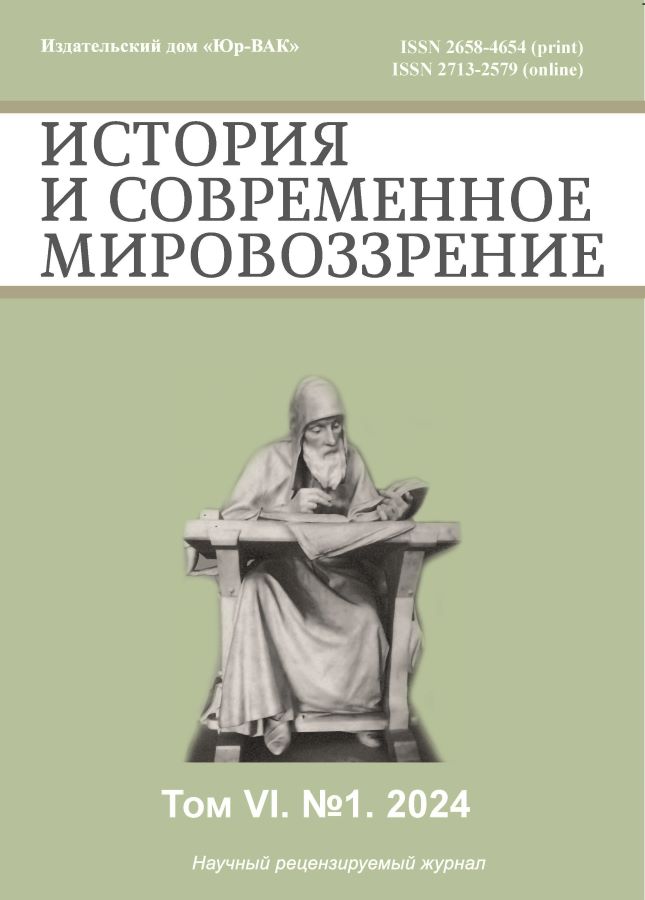To the Question of the Creation and Distribution of Gunpowder Weapons
- Authors: Nefedov S.A.1
-
Affiliations:
- Institute of History and Archeology, Ural Branch of the Russian Academy of Sciences
- Issue: Vol 6, No 1 (2024)
- Pages: 113-118
- Section: HISTORY OF SCIENCE AND TECHNOLOGY
- URL: https://journals.eco-vector.com/2658-4654/article/view/630563
- DOI: https://doi.org/10.33693/2658-4654-2024-6-1-113-118
- EDN: https://elibrary.ru/SZYBXP
- ID: 630563
Cite item
Abstract
The article analyzes the current state of the problem of the creation and distribution of gunpowder weapons. A brief review of publications over the past twenty is given in the article. The evolution of gunpowder in China was traced in these works. The process of taking this weapon by the Mongols was explained, and its characters were indicated. Evidence of Mongol use of gunpowder in their western campaigns was analyzed. The proliferation of gunpowder weapons in the Middle East has been traced in more detail. In particular, it was shown that the concept of «naft» began to apply mainly to powder mixtures from the 12th century. This made it possible to evaluate information about the use of «naft» by the Mongols and about the sending of shooters with «naft» from Egypt to the Golden Horde. The opinion that the Golden Horde warriors used gunpowder was firmly substantiated.
Keywords
Full Text
About the authors
Sergey A. Nefedov
Institute of History and Archeology, Ural Branch of the Russian Academy of Sciences
Author for correspondence.
Email: hist1@yandex.ru
ORCID iD: 0000-0003-0136-5020
SPIN-code: 9830-0926
Scopus Author ID: 40861593700
ResearcherId: Q-1642-2015
Dr. Sci. (Hist.), Associate Professor, Leading Researcher, Institute of History and Archeology
Russian Federation, YekaterinburgReferences
- Volkov I.V. On the purpose of ceramic balls from the Golden Horde settlements. Historical and archaeological research in Azov and the Lower Don in 1991. // Azov Museum of Local Lore, 1993. Vol. 11. pp. 145–155.
- Juvaini A. Genghis Khan. The story of the conqueror of the world, recorded by Ala-ad-Din Ata-Melik Juvaini. M.: Magistr-press», 2004. 688 p.
- Kokhanovich N. Russian gunpowder // Chemistry and life. 2000. No. 7. pp. 55–57
- Nabiev R.F., Gabbasov D.A. Artillery of the Juchid Empire // Golden Horde Heritage. Kazan, 2009. pp. 249–257.
- Nedashkovsky L.F., Shigapov M.B. Metal products and ceramics from the Khmelevsky I settlement // Nizhnevolzhsky archaeological bulletin. 2018. T. 17. No. 1. P. 160–176.
- Pigarev E.M., Zeleneev Yu.A. Research on the Selitrennoye settlement // Archaeological discoveries. 2018. T. 2016. pp. 198–200.
- Andrade T. The Gunpowder Age: China, Military Innovation, and the Rise of the West in World History. Princeton: Princeton University Press, 2016. 448 pp.
- Chase K. Firearms: A Global History to 1700. Cambridge: Cambridge University Press, 2003. 290 pp.
- Hall B. Introduction, 1999 // Partington J. R. A History of Greek Fire and Gunpowder. Baltimore and London, The Johns Hopkins University Press, 1999. Р. XV–XXXIV.
- Haw S. The Mongol Empire — the first ‘gunpowder empire’? // Journal of the Royal Asiatic Society. 2013. No.23. P. 441–469.
Supplementary files









